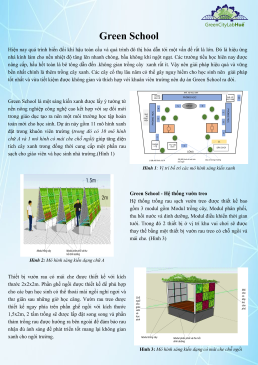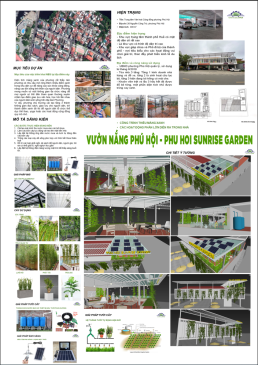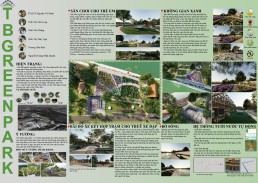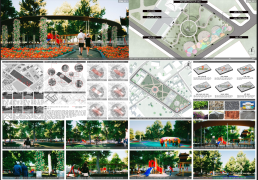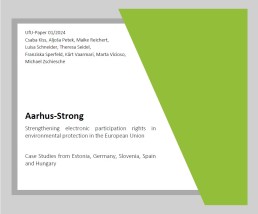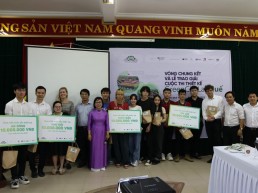UfU study: State of digital public participation in environmental issues in five EU Member States
Gemeinsam mit Partner*innen aus Estland, Ungarn, Slowenien und Spanien haben wir den Stand der digitalen Öffentlichkeitsbeteiligung in Umweltfragen in fünf EU-Mitgliedstaaten und die Auswirkungen der COVID-19-Pandemie untersucht.
Die digitale Öffentlichkeitsbeteiligung in Umweltfragen ist ein wesentliches Element moderner Demokratie, da eine effektive Einbeziehung der Öffentlichkeit zu informierteren Entscheidungen führt, die den Umweltschutz stärken. Gegenwärtig werden die Möglichkeiten der digitalen Beteiligung jedoch nur rudimentär und bruchstückhaft genutzt. Eine Stärkung der digitalen Beteiligungsverfahren durch die Behörden in den EU-Mitgliedstaaten kann daher zu einer solideren und umfassenderen Öffentlichkeitsbeteiligung im Allgemeinen führen. Ziel dieser Studie ist es, den aktuellen Stand der digitalen Öffentlichkeitsbeteiligung in fünf EU-Mitgliedstaaten zu bewerten, um eine erste Wissensgrundlage zu schaffen. In Zukunft können die gewonnenen Informationen genutzt werden, um die digitalen Fähigkeiten und Kapazitäten innerhalb von Genehmigungsbehörden zu verbessern.
Die Studie untersucht den unterschiedlichen Einsatz digitaler Verfahren der Öffentlichkeitsbeteiligung in der EU in Bezug auf die Umweltverträglichkeitsprüfung (UVP). Es wird deutlich, dass es kein gemeinsames Verständnis darüber gibt, wie digitale Instrumente zur Förderung und Erleichterung der Öffentlichkeitsbeteiligung zu regeln und einzusetzen sind. Dieser vergleichende Ansatz kann die Behörden der Mitgliedstaaten jedoch dazu anregen, bewährte Verfahren aus den vorgestellten Ländern zu übernehmen und aus bestehenden Mängeln zu lernen.
Verbesserungsvorschläge
Nach der Bewertung der Situation in den fünf untersuchten Ländern ergeben sich die folgenden Verbesserungsvorschläge für eine effektive digitale Öffentlichkeitsbeteiligung.
UVP-Portale
- Einrichtung eines einheitlichen nationalen UVP-Portals.
- Alle Projekte und ihre relevanten Unterlagen werden auf dem UVP-Portal veröffentlicht.
- Nicht-technische Zusammenfassung des Projekts und der Umweltverträglichkeitsstudie sind verfügbar.
- Die Dokumente sind in einem benutzerfreundlichen Format herunterladbar.
- Die Dokumente sind vollständig und in einem vordefinierten Ablagesystem mit leicht identifizierbaren Dateinamen organisiert.
- Suchfunktion zum Auffinden von Fällen, Dokumenten und Text innerhalb von Dokumenten.
- Durchsuchbare Archivfunktion zum Auffinden von Informationen über abgeschlossene Projekte.
- Automatische Benachrichtigungen über Projekte in einem bestimmten Bereich oder Interessengebiet (z. B. per E-Mail oder App).
- Das UVP-Portal ermöglicht direkte Kommentare zu Projekten ohne langwieriges Registrierungsverfahren.
- Die Antworten auf die Kommentare der Teilnehmenden sind öffentlich und leicht online zugänglich.
Öffentliche Anhörungen
- Online und offline zugänglich (Hybrid).
- Einrichtung von Online-Anhörungen ohne vorherige Zustimmung aller Teilnehmenden.
- Die betroffene Öffentlichkeit kann jederzeit an der Anhörung teilnehmen.
Allgemein
- Spezifische separate Gesetzgebung zur elektronischen Öffentlichkeitsbeteiligung.
- Die Standards für die elektronische Öffentlichkeitsbeteiligung müssen genauso hoch sein wie die für die persönliche Beteiligung.
- Finanzierung von Pilotprojekten.
- Verbreitung von Informationen über soziale Medien.
Bioenergy without land conflicts
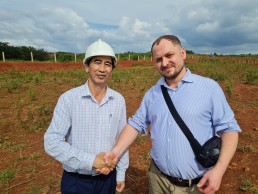
27.01.2023
Bioenergy without land conflicts
The cultivation of cassava on disused mining land for the production of bioethanol makes a meaningful contribution to climate protection in Vietnam.
For years, bioethanol production has been criticized for competing with the food industry for agricultural land. However, our project study from Vietnam shows that growing cassava on abandoned mining land circumvents this conflict, as such land is unsuitable for food production. The use of the resulting bioethanol leads to CO2 savings of up to 50% compared to conventional fuels.
Vietnam’s energy demand is steadily increasing due to economic growth and industrialization. In this context, the share of renewable energy is expected to increase from 3.7% in 2020 to 10% in 2030. To achieve this goal, the Vietnamese government has mandated the blending of bioethanol and the recultivation of abandoned mining areas. UfU benefits from this because in our CPEP project, we work with mining companies that use cassava to recultivate their abandoned mining land in order to make additional profits from the sale.
Abandoned mining sites are often contaminated by heavy metals and other toxins due to past activities, making them unsuitable for food production. Therefore, the cultivation of cassava does not compete with food production and is a suitable reclamation measure. On UfU’s test plots in Vietnam, cassava yields are in the good middle range at 25 tons per hectare. National average yields range from 13 to 35 tons. However, only 2 tons of ethanol per hectare could be produced, 1.5 tons less than the average. This indicates low sugar content due to lower soil quality.
Using bioethanol from cassava grown on abandoned mining land can save up to 50 percent in CO2 emissions compared to conventional fuels. This saving is also significantly higher compared to conventionally produced bioethanol. For example, large areas of rainforest are often cleared for conventional biofuel production, resulting in immense CO2 emissions. However, the negative effects of land-use change are avoided when using abandoned mining sites.
The cultivation of cassava on abandoned mining areas for the production of bioethanol can be a sustainable way for Vietnam to meet the increasing energy demand and at the same time save CO2 emissions. For this reason, the follow-up project will further analyze the cultivation and economic utilization of cassava in order to successfully scale up the production of bioethanol.
More on the opportunities and challenges of bioethanol production in Vietnam can be found in our new UfU paper:
Green-blue Infrastructure for Climate Adaptation
2. November 2022
Green-blue Infrastructure for Climate Adaptation
Winning Initiatives of the Design Competition “Hue Initiatives – Green Space, Green City” were selected
On September 30th, the Final Round and Award Ceremony of the Design Competition “Hue Initiatives – Green Space, Green City” took place at the Hue University of Sciences (HUSC) in Central Vietnam. In the Design Competition, the GreenCityLabHue invited young people from Hue and neighbouring cities to hand in their creative ideas showing how green-blue infrastructure such as trees, fountains and green walls can be used to enhance four currently vacant sites in Hue.
The benefits of green-blue infrastructure
Hue is already strongly affected by the effects of climate change like heat waves, storms and flooding. Green-blue infrastructures like parks and green roofs improve cities’ resilience against such events. Therefore, the GreenCityLabHue project has been looking for the best greening ideas for four sites in Hue – and many young people sent us their proposals. The best ideas have now been awarded and will be implemented in the next year. Through the competition students and decision-makers learn how to specifically integrate green-blue infrastructure into Hue’s infrastructure using practical examples and a “do-it-yourself” approach. In this way, they are empowered to implement their learnings in future urban planning projects.
Climate adaptation through participation
Simply incorporating more green-blue infrastructure into urban development in Hue is though not enough. It must be designed in such a way that it supports the land use objectives and also fully exploits its potential for climate adaptation. For example, trees and shrubs on unsealed surfaces help much more against heat waves than flowers in pots on asphalt. In order to achieve these optimizations and to create acceptance for green-blue infrastructure, it is important to jointly develop concepts through participatory events with both experts and local stakeholders. Therefore, the designs were intensively discussed at the final round of the design competition on the 30th of September. The teams received feedback and suggestions for improvement from representatives of the Hue City Government, Green Tree Company, Thua Thien Hue Association of Architecture, Thua Thien Hue Association of Urban Planning and the representatives from the previously co-selected sites.
The event was carried out by the Independent Institute of Environmental Issues (UfU, Berlin), the Faculty of Architecture of Hue University of Sciences, the MienTrung Institute for Scientific Research (MISR) and the Thua Thien Hue Institute for Development Studies (HuếIDS) as activity within the GreenCityLabHue project “Strengthening climate resilience of urban regions in Central Vietnam through nature-based solutions for heat adaptation and air quality improvement”. The project is funded by the German Federal Ministry of Education and Research.
The GreenCityLabHue Exhibition/Display
The Design Competition was accompanied by a visit of the GreenCityLabHue Exhibition/Display at the Faculty of Architecture at HUSC, where students and professionals alike could learn about the benefits of green-blue infrastructure in urban regions and ways to build a better, greener and more resilient city.
Winning Initiatives of the Design Competition “Hue Initiatives – Green Space, Green City”
